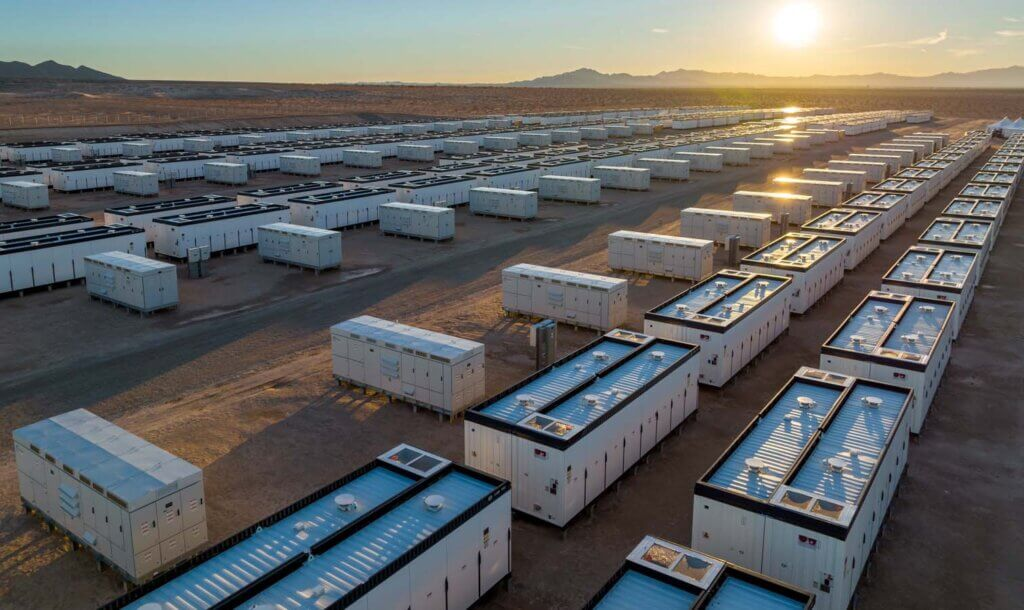Fluence Energy Inc., one of the world’s leading energy storage technology providers, has announced a sharp revision to its 2025 financial guidance and is suspending multiple energy storage projects in the United States. The move comes in response to rising tariff uncertainty and shifting U.S. trade policies on imported battery components.
This sudden shift is expected to send ripples through the clean energy sector, which relies heavily on energy storage systems for supporting the country’s renewable power transition.
Tariff Uncertainty Triggers Major Business Realignment
The Biden administration recently proposed expanding Section 301 tariffs on products from China, including critical components used in battery energy storage systems (BESS). Fluence, which sources a significant portion of its battery cells and modules from Asia, now faces growing cost pressures and project delays.

In response, the company has decided to temporarily halt certain ongoing and planned projects across the United States, citing financial risks that outweigh potential short-term gains.
“We are committed to supporting the U.S. energy transition, but the current tariff environment forces us to reassess how and where we build and deploy our technology,” said Julian Nebreda, CEO of Fluence.
According to Fluence, the uncertainty surrounding future tariff implementation timelines and scope has made it increasingly difficult to predict costs and honor previous financial estimates.
Lowered 2025 Guidance Sends Market Jitters
Along with project suspensions, Fluence has also issued revised financial guidance for 2025. The company now projects revenue in the range of $2.0 billion to $2.2 billion—significantly lower than its earlier forecast of $2.7 billion.
Adjusted EBITDA guidance has also been slashed, reflecting the anticipated cost burden and margin compression from supply chain disruptions and possible price hikes on battery components.
Investors reacted swiftly to the announcement, with Fluence’s stock (NASDAQ: FLNC) dropping nearly 18% in after-hours trading following the guidance update.
U.S. Energy Storage Boom Faces a Roadblock
Fluence’s announcement highlights broader concerns about how tariff policies could slow down progress in U.S. renewable energy infrastructure. Energy storage systems are essential for stabilizing power grids and integrating solar and wind energy.
According to a report from Wood Mackenzie, the U.S. is projected to deploy over 75 GW of energy storage capacity by 2030. However, delays and cost increases from tariffs may derail this trajectory.
Industry experts warn that more companies could follow Fluence’s lead unless there’s more clarity and long-term planning on tariff policies.
Trade Policy vs. Clean Energy Goals
The Biden administration has argued that new tariffs are essential for promoting domestic manufacturing and reducing dependency on foreign supply chains—especially from China. While the intent aligns with national security and economic goals, energy experts caution that abrupt policy shifts can disrupt market momentum.
The American Clean Power Association (ACP) voiced concern over the impact of these measures on ongoing decarbonization efforts.
“We support growing American manufacturing, but tariff actions must be balanced to avoid slowing the clean energy buildout,” said ACP President Jason Grumet.
Fluence Exploring Alternative Supply Chains
In its statement, Fluence noted it is actively working on diversifying its supplier base and expanding local partnerships to reduce dependency on imports. The company also hinted at potential future investments in U.S.-based manufacturing, though no immediate announcements were made.

This is in line with the Department of Energy’s push for more domestic clean tech production, supported through the Inflation Reduction Act (IRA) and other clean energy incentives.
But Fluence emphasized that reshoring efforts take time and require substantial upfront investment. Until that infrastructure is in place, tariff uncertainty will remain a drag on strategic planning.
What This Means for the Market
Fluence’s decision to suspend U.S. projects marks one of the most high-profile setbacks for the energy storage industry in recent months. With storage demand surging due to grid modernization and EV integration, delays like these could lead to power reliability issues during peak demand periods.
Moreover, it underscores how trade policy and clean energy objectives must be better aligned. While supporting domestic industry is crucial, so is maintaining the pace of clean energy deployment needed to meet climate goals.
Looking Ahead
As Fluence recalibrates its strategy, the spotlight now turns to federal regulators and policymakers. The industry is watching closely for further announcements from the United States Trade Representative (USTR) regarding final tariff rules and any potential exemptions for clean energy components.
In the meantime, other major players in the sector may also begin reviewing their 2025 projections and project timelines, possibly triggering a ripple effect across the energy landscape.
Fluence has assured stakeholders that it remains committed to innovation and will continue operations in global markets while adapting its U.S. strategy in line with policy developments.
“This is not a retreat—it’s a recalibration,” said Nebreda. “We’re taking strategic steps to ensure long-term sustainability for both our business and our mission.”
Final Thoughts
The road to clean energy is not without bumps. Fluence’s bold decision to pull back amid tariff ambiguity is a reminder that energy innovation cannot thrive in isolation from policy stability. A coordinated, transparent approach is essential if the U.S. wants to lead in both clean energy production and manufacturing.
Also Read – EV Market Resets in 2025: Big Auto Brands Strike Back






